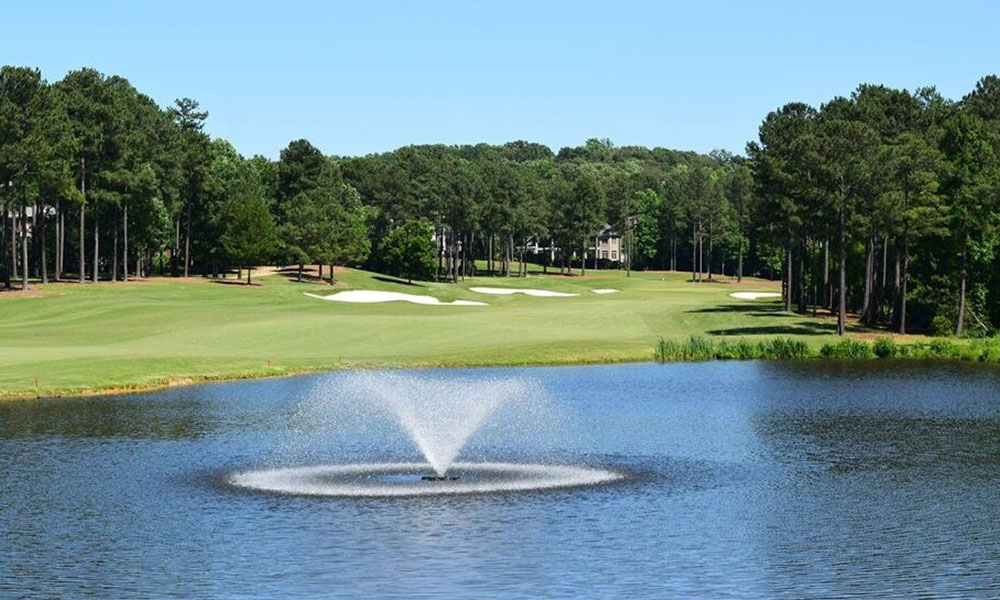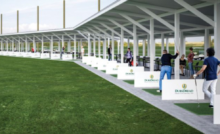Spiio’s Partnership with Virginia Tech Promises Major Research Gains for Water Conservation and Winterkill


Virginia Tech, Independence Golf Club
Travis Roberson is conducting important research on using in-ground sensors, drones, and light reflectance to conserve water. Working with a course at Independence Golf Club, Spiio has become a key tool in his work. He hopes that he’ll gain important insight into how Spiio sensors can be used not only for water conservation but also inefficiently preventing winterkill.
For most, the idea of researching for a Ph.D. conjures up images of a frazzled student poring over books, spending hours in front of a computer, or slaving away in a laboratory. For Travis Roberson at Virginia Tech, however, doctoral research is happening outside on the golf course. His research focuses on water conservation—specifically, using in-ground sensors, drones, and light reflectance to build a correlation for soil moisture. That information can be used to make data-driven decisions, and data-driven decisions are what Spiio is all about.
Research and Partnership: Roberson, Virginia Tech, Independence Golf Club, and Spiio
When Roberson finished his undergraduate research at Virginia Tech, his advisor, Dr. David McCall, introduced him to his research using light reflectance for water conservation. After gaining some foundational knowledge and getting to experiment with some of the advisor’s equipment, an interest was sparked.
The connection to a golf course was incidental. “I had never played golf,” says Roberson. “I loved the agronomy, the science, and I got introduced to golf from the first job I ever had.” I worked as a greenkeeper many years prior and gained exposure to the importance of incorporating data into management decisions.
I loved the agronomy, the science, and I got introduced to golf from the first job I ever had.
That brings us to 2017, when Roberson was at Virginia Tech’s main campus in Blacksburg. He was doing greenhouse studies, looking at using the same technology through intensive drydowns. David McCall and Jordan Booth, predecessor to Travis, , struck a partnership with Giff Breed, president of Independence Golf Club. In essence, VT uses the Bear research course at Independence for real-world research, and that research is marketed for interest. Then, when Booth left to work at USGA, Roberson picked up where he left off.
Roberson came across Spiio at an industry conference and was very interested, as was the owner of the course. Roberson requested some sensors from Spiio to use in his research, and another partnership was born. In early May, Independence Golf Club installed sixty Spiio sensors in their greens.
Potential Gains from Roberson’s Research with Spiio: Water Conservation
“One issue that we have with the research I’m doing using drones is that we need a real-world way of using the data,” notes Roberson. “The optimal way would be that data would automatically inform the decision about when and how much to water, and then do it. But we’re not there technologically.” Roberson hopes that Spiio sensors will help bridge that technological gap.
The optimal way would be that data would automatically inform the decision about when and how much to water, and then do it.
There are a few key ways that Roberson sees Spiio sensors contributing to his research.
The first area of opportunity, of course, is water. Roberson points out that “water is the most limiting resource for the planet. Everything depends on water.” He also notes that “because golf courses are in the agriculture field but are there for leisure (rather than food or another necessity), using excessive water for turf quality preservation can be frowned upon, especially in a drought.”
In addition to growing concerns about climate change, drought, and other environmental factors, water conservation is crucial in this field because water is such a key part of managing healthy turfgrass. Water determines nutrient uptake as well as basic survival and appearance of any plant. However, those in the turfgrass field know that you can overdo it. Overwatering not only wastes money, but it also causes disease, weed growth, and other problems that cost even more money to treat.
Using excessive water for turf quality preservation can be frowned upon, especially in a drought.
One question Roberson has going into the Spiio partnership is how to determine the optimal placement of the sensors. Right now, the best way to decide where to place them is based on historical knowledge from the superintendent. You ask where the wettest and driest areas are, and make decisions from these areas of interest.. Roberson hopes that eventually, that decision can be made with data as well. His research is primarily on fairways (since that is typically where the most water consumption occurs).
Additional Insights: Winterkill and Soil Temperature Monitoring
Another major research objective that Roberson aims to utilize Spiio for is winterkill. Winterkill is an important research area for Independence Golf Club because it is a huge issue in the transition zone. “Greens are a lifeline,” states Roberson. “Lose those, and people lose jobs. We get cold enough that the greens in the top few inches are sand-based and fluctuate a lot in temperature. Bermuda grass is not adapted for severe temperature fluctuations we tend to observe in the transition zone; which can lead to the potential death of the plant .”
Related: A Superintendent’s 5 Predictions About the Future of the Golf Industry
Professionals combat winterkill by using covers to retain warmth and keep greens alive. However, revenue is lost when you have to keep greens constantly covered. Spiio sensors track soil temperature continuously and makes them optimal for winterkill research since soil temperature cannot be taken when the greens are covered. Roberson plans to install sensors under makeshift covers to track the minimum temperatures and find out exactly when you need to cover to prevent winterkill.
From what I’ve seen with Spiios so far, and assuming we’re able to collect the data we’re looking for— I think they’ll provide significant reductions in water usage.
Roberson is optimistic that the results of this project will be positive. “I don’t have data to support this yet, but I think—from what I’ve seen with Spiios so far, and assuming we’re able to collect the data we’re looking for— I think they’ll provide significant reductions in water usage. I also think we’ll be able to use these sensors to provide input, in real-time, on when to cover and not to cover. As we tease out the data, I think we’ll be able to notify golf course superintendents within hours of when they need to cover.
All in all, the partnership is promising. The ability to make data-driven decisions in turf care has the potential to pay off in the short- and long-term, and we are continuing to discover new applications for that potential to improve water conservation and winterkill.
Recent Posts
Memphis Country Club: A Golfer’s Study in Precision and Tradition
If you have ever teed it up at Memphis Country Club, you know this isn’t…
Foley Company attains GCSAA Silver Partner Status
Foley Company, a leader in turf equipment innovation and technology, affirms its support of the…
Harrell’s continues longstanding support of the GCSAA Foundation
Harrell’s LLC, a leading distributor of customized agronomic products for turfgrass since 1941, has donated…
City of Orlando Announces New State-of-the-Art Driving Range at Dubsdread Golf Course
The City of Orlando is excited to announce the construction of a brand-new, state-of-the-art driving…
Discover Puerto Rico for Great Golf Trips and After-Round Activities, Amenities
Golfers cannot live by the game alone which is why Puerto Rico provides the perfect…
Q&A with a Multi-talented Golf Course Architect – Part 2: Making the Rounds – Installment 39
This column features recollections of the author’s 37 years as a golf writer. These installments…


